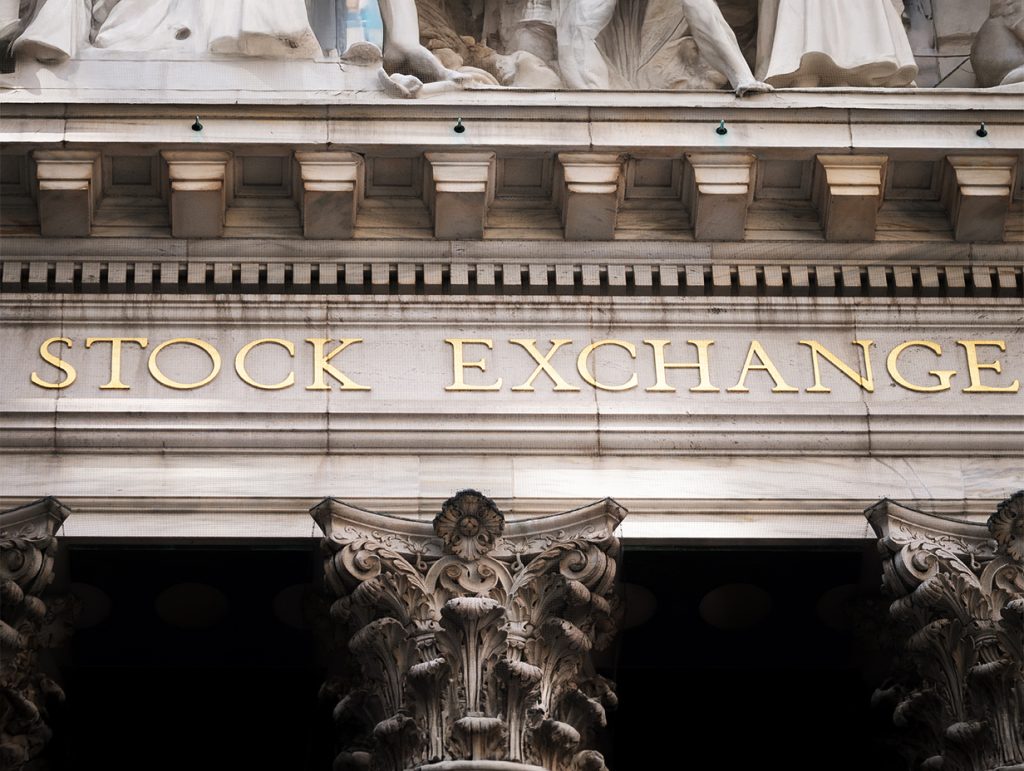July 2025 marked a pivotal month for financial markets, as the Trump administration unveiled a series of trade agreements alongside the enactment of the One Big Beautiful Bill Act (OBBBA). The developments provided investors with a clearer sense of policy trajectory, easing some of the uncertainty that had been clouding sentiment this year. Major U.S. indices reached a record high, driven by hope that the worst of the trade war rhetoric is over.
The U.S. kicked off July by finalizing a trade pact with Vietnam, reducing tariffs from a previous 46% to 20%, while imposing a steep 40% rate on trans-shipments, an effort to curb goods passing through Vietnam to circumvent tariffs placed on other countries. This was followed by deals with Japan and the European Union, both of which settled on a 15% baseline tariff for most goods, including automobiles. These rates, though significantly higher than the pre-Trump average of 2.4%, were seen to help stabilize global trade. Japan’s agreement also included a $550 billion investment commitment into U.S. industries, while the EU pledged $750 billion in energy purchases and $600 billion in U.S. investments. These deals hinted at cooperation, which helping to calm fears of an escalating trade war and encouraged capital flows into U.S. markets.
Global developed equity markets, represented by the MSCI World Index, also responded favourably to these developments, as well as the stimulus measures in the OBBBA, and climbed 1.3%.
Emerging market equities posted a robust 2.0% gain in July 2025, outpacing developed markets amid a wave of optimism driven by regional strength in China and South Korea. Investors responded positively to signs of stabilization in China’s economy, helped by supportive policy.

Stocks and Commodities
Second quarter earnings reports delivered a strong boost to the US equity markets, helping to sustain the bullish momentum. In the U.S., nearly 80% of S&P 500 companies that reported earnings exceeded analyst expectations for both revenue and profit growth, well above the historical average of around 65%. The widespread outperformance reinforced the view that the recent legislative gridlock and trade tensions had only a limited impact on corporate fundamentals.
US Small-cap stocks, represented by the Russell 2000, gained 1.7% in July, outperforming large caps for a major of the month. Early momentum was driven by the pro-growth provisions in the final version of the OBBBA, which included tax incentives and regulatory relief aimed at boosting domestic manufacturing and innovation. These measures were seen as particularly beneficial to smaller firms with higher sensitivity to domestic economic conditions. However, in the final week of July, the outperformance shifted back to large-caps, especially mega-cap tech names, as the Federal Reserve opted to keep interest rates steady, and several tech giants delivered strong earnings. This led to Growth stocks surging 2.1%, significantly outpacing value stocks, which rose just 0.5%, according to the MSCI World Growth and MSCI World Value indices.
By month end, the standout performers were the Magnificent Seven technology giants, which continued to dominate earnings headlines. These companies posted an average earnings growth of 17%, compared to 4% for the broader market. Revenue growth in the tech sector also outpaced other industries, coming in at 14% versus 7% for the rest of the market. The divergence reflects the ongoing strength of cloud computing, and AI.

Canada saw strong returns, but more muted compared to the US. The TSX Composite posted a 1.7% return for July. Like the US, the AI momentum carried the Communication Services and Information Technology sectors to lead the performance, at 5% and 4.5% monthly returns, respectively. Real estate also did well at 4.7%, supported by strong earnings from Canadian REITs and active acquisition strategies, particularly in seniors housing and retail properties. The Health Care sector had the worst performance at -6.2%.
Asian equity markets saw renewed strength, with the MSCI Asia ex Japan index rising 2.6% in July. This was driven by a more favorable macroeconomic backdrop, particularly in China, where first-half GDP growth came in at 5.3% year-over-year, exceeding the government’s 5% target. Industrial production also beat expectations, rising 6.8% year-over-year in June, reflecting stronger domestic demand and improved factory output. China’s Caixin manufacturing PMI also climbed above the 50-point threshold, indicating expansion in factory activity. This marked a turning point after months of contractionary readings and suggested that stimulus measures were beginning to have a positive impact.
Taiwanese equities preformed well, thanks to the ongoing AI momentum. The government’s “Ten Major AI Infrastructure Projects” initiative, announced in July, aims to generate over $510 billion in economic value by 2040. This includes strategic investments in silicon photonics, quantum technology, and AI robotics, and establishing international research hubs.
The UK equity market also had strong performance, in local currency terms. This was attributed to a rebound in earnings expectations within the energy and materials sectors. These sectors had previously seen depressed forecasts due to weak commodity prices and global demand concerns but were revised upwards as industrial activity and raw material prices began to stabilize. The mining and energy sectors of the FTSE 100 led the gains. Improving sentiment around global trade and infrastructure spending also helped the momentum, as this benefited the UK’s resource-heavy economy.
Equities across continental Europe posted a modest decline of 0.2% for the month. Underperforming relative to other major regions. This was largely attributed to caution in the European technology sector, where several leading firms issued warnings about the potential drag on future growth stemming from evolving U.S. trade policies, as many of these companies rely heavily on global supply chains and U.S. market access. The warnings weighed on investor sentiment, particularly in Germany and the Netherlands, where tech and industrial firms are key index components.
Adding to the region’s challenges, food and beverage companies struggled to maintain momentum amid declining demand from China. While Chinese manufacturing numbers are coming in optimistically, consumer preferences are changing to a more defensive tone. This has had a ripple effect on European exporters, especially those in the luxury and packaged goods sectors. Nestlé reported softer sales figures and flagged rising inventory levels in Asia, prompting analysts to revise earnings forecasts downward.
Commodity markets delivered mixed results. Steel prices rose, supported by reduced supply and seasonal maintenance in key markets. Iron ore prices surged by over 10%, driven by strong demand from steel mills. These trends provided a tailwind for emerging markets, with significant exposure to raw materials, particularly Brazil and South Africa. However, the overall commodities index dipped 0.5%, weighed down by a sharp correction in copper prices following President Trump’s announcement of a 50% tariff on semi-finished copper imports. While refined copper was later exempted, the initial shock triggered an 18% plunge in copper futures, the largest single day drop since 1989.

Bonds
With an improved US growth outlook and uneasiness about the fiscal situation, the US bond markets were flat in July, with the Bloomberg US aggregate Treasury index posting slightly negative returns of -0.4%, and Corporate and High Yield being slightly positive. The U.S. Consumer Price Index (CPI) report for June offered a modest upside surprise, with core inflation coming in lower than anticipated. Headline CPI rose 2.7% year-over-year, while core CPI, which excludes volatile food and energy prices, climbed 2.9%. Although tariffs have been raised on a wide range of imported goods, their impact on consumer prices has been limited so far. This is largely due to strategic inventory management and supply chain adjustments by businesses, which have helped buffer costs. While the statutory average tariff rate has hovered around 15%, the effective rate paid by companies in June and July was closer to 10%, softening the inflationary blow.
For the Federal Reserve, the full economic impact of tariffs and recent fiscal measures may not become clear until the autumn. Policymakers are closely watching how these factors influence inflation, growth, and corporate behavior, but the lag in transmission means that immediate policy adjustments are unlikely. Meanwhile, the Trump administration continues to urge the Fed to lower interest rates.
Canada’s economic performance exceeded market expectations, with June’s employment and inflation data prompting markets to dial back expectations for Bank of Canada rate cuts, now anticipating less than a 25-basis point reduction this year. This put upward pressure on bond yields and led to a muted negative return across the government bond yield curve, with the long end ending the month down -1.9% and the short end remaining flat at -0.1%. Corporate bonds also remained flat.
In July, eurozone government bond yields drifted upward, reflecting a cautiously optimistic outlook for regional growth. This sentiment was supported by the flash composite Purchasing Managers’ Index (PMI), which rose to 51.0, slightly above expectations. The improvement was broad-based, with both the services and manufacturing sectors contributing to the uptick. While the PMI reading remains modest, it signals expansion and economic momentum.
Despite growth indicators, uncertainty looms over the potential impact of the recently announced US-EU trade deal, which includes $1.35 trillion in investment commitments. While the deal is expected to stimulate transatlantic economic activity, analysts are watching closely to see whether it could divert capital flows or shift competitive dynamics in a way that puts pressure on European bonds.
Eurozone inflation came in at 2% year-over-year in June, aligning with expectations and suggesting that price pressures remain contained. However, the European Central Bank (ECB) opted to keep its deposit rate unchanged at its July meeting.
In July, UK financial markets were jolted by a hotter-than-expected inflation report for June. Headline CPI rose to 3.6% year-over-year, up from 3.4%, defying consensus expectations that it would remain unchanged. Core inflation, which excludes food and energy, also accelerated, climbing from 3.5% to 3.7%. The unexpected rise was largely driven by increased costs in transport, clothing, and recreation, suggesting that price pressures are broadening beyond energy and food.
The inflation surprise had immediate implications for the UK government bond market. Ten-year Gilt yields rose to 4.6% over the month, reflecting investor expectations that the Bank of England may need to maintain a tighter monetary stance for longer.
Japan’s government bond market was the worst performer among major economies, as investors reacted to the ruling LDP losing its majority in the upper house election. This political shift dampened expectations for fiscal consolidation, while persistent inflation added pressure. As a result, 10-year Japanese government bond yields rose to 1.6% on July 25, the highest level since 2008.
Globally, Credit markets outperformed government bonds in July, with spreads narrowing thanks to strong corporate earnings.
Conclusion
Investor sentiment showed signs of recovery in July as political uncertainty eased, and markets gained clearer visibility on U.S. trade and fiscal policy. The renewed optimism drove equity valuations even higher, with global price-to-earnings ratios climbing to 20x, well above the historical average of 16x, leaving expectations high. The market appears to be embracing a “Goldilocks” outlook, anticipating a blend of accelerating growth fueled by fiscal stimulus and AI-driven productivity, alongside stable inflation. With valuations stretched and macro risks still present, maintaining a well-diversified portfolio remains crucial to guard against both a potential resurgence in inflation, and the possibility of an unexpected economic downturn.







